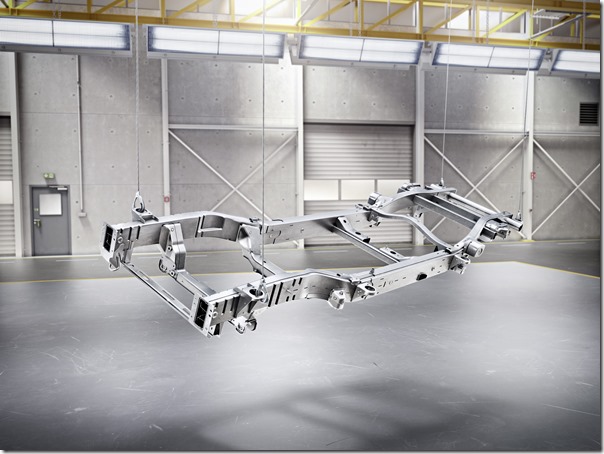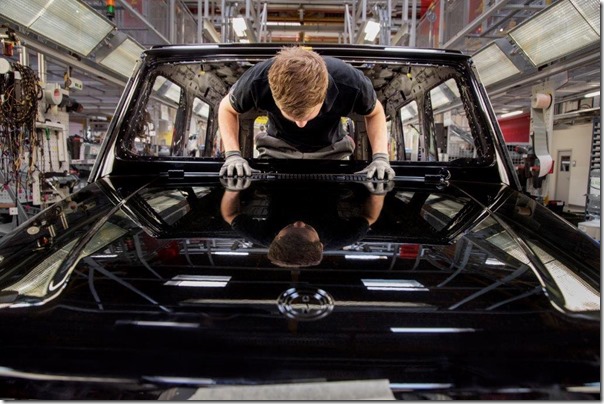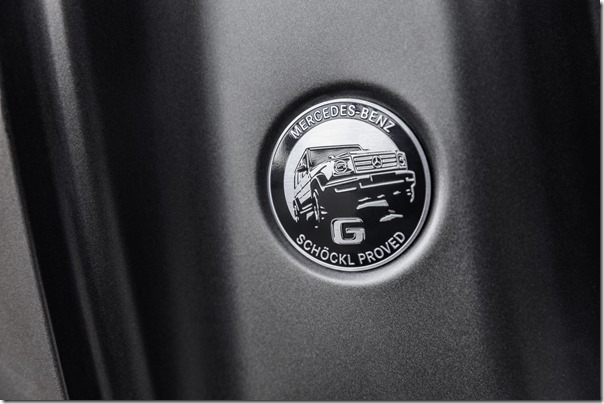Magna Manufacturing the Mercedes G-Class
This is a 1979 Mercedes-Benz G-Class, the first year the model appeared with its Schwarzeneggerian robustness, which happens to be incased in a block of amber-colored resin: Unlike the insects that are sometimes found encased in actual amber, objects that you can hold in your hand, this object measures 5.50 meters long, 2.55 meters wide and 3.10 meters high.
This is a 1979 Mercedes-Benz G-Class, the first year the model appeared with its Schwarzeneggerian robustness, which happens to be encased in a block of amber-colored resin:
Unlike the insects that are sometimes found encased in actual amber, objects that you can hold in your hand, this object measures 5.50 meters long, 2.55 meters wide and 3.10 meters high. It took 90 days to build and 44.4 tonnes (or nearly 49 U.S. tons) of resin were used.
The structure was created for the introduction of the 2019 G-Class at the North American International Auto Show in Detroit this week.

The genesis of the G-Class occurred in 1972 in Graz, Austria, when an agreement was struck between what was then Daimler-Benz AG and Steyr-Daimler-Puch. The two worked on the development of a vehicle that could readily handle off-road conditions. Since the first G-Class, the vehicle has featured all-wheel drive, fully locking differentials and a ladder frame.

As of last summer, 300,000 of the vehicles were built in Graz.

But not by Mercedes.
The Geländewagen has been built in a factory in Graz that was initially a Steyr-Daimler-Puch plant, but since 1998 has been a Magna International operation.
Guenther Apfalter, president of Magna Europe and Magna Steyr, remarked, "Being the contract manufacturing partner for Daimler AG since 1979 is for me an expression of the constant trust that our customer places in Magna."
Given that a 2018 G-Class starts at $123,600 U.S., the trust that Daimler’s customers put—perhaps unwittingly—in Magna (how many people imagine that a Mercedes is manufactured by anyone other than, well, Mercedes?) is perhaps even greater.
Incidentally: Daimler and Magna have a contract that runs through 2023 to build the G-Class.

RELATED CONTENT
-
Plastics: The Return of Body Panels?
A problem with plastics and steel structures is a difference in the coefficient of expansion. Some material modifications may ameliorate that problem.
-
TPE Checks the Boxes
Plastics supplier KRAIBURG has developed a thermoplastic elastomer lineup—the VS/AD/HM series within the THERMOLAST K suite—that checks the boxes of scratch and abrasion resistance, chemical compatibility and UV stability.
-
On Charging, Sustainable Tires, the Lincoln Nautilus and more
Charging at home, driving on plastic, cameras for exterior, Fisker and Foxconn, and the Lincoln Nautilus reviewed


.jpg;width=70;height=70;mode=crop)






